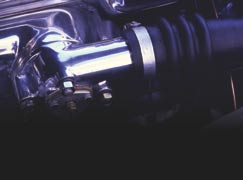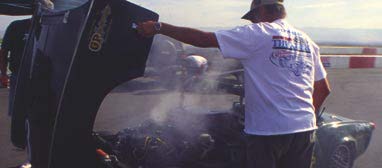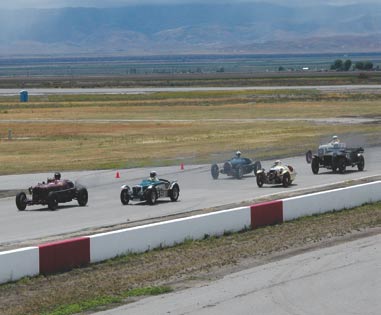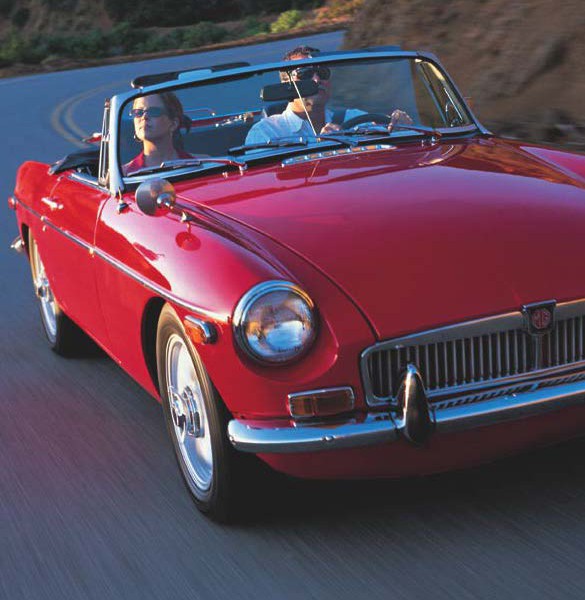By Kelvin Dodd
SU Fuel Pump Retrofit
I want to re-install the original SU electric fuel pump in my car, but the original steel lines have been cut. Is there any easy way of doing this?
—John Campbell
The original SU fuel pump is a very reliable unit, so refitting it is a good idea. The later MGB model had rubber lines connecting to push-on banjo fittings at the pump. To hook rubber lines to an SU pump, you will need a Hose Conversion Kit (376-108). This includes everything required: banjo unions, banjo bolts, sealing washers, hose clamps, and hoses. Note: in some cases, it may be necessary to install two washers on the inside of the union to allow it to clear the pump’s alloy head casting.
Single-Battery MGBs
I’m thinking of converting my early MGB to a single 12-volt battery. Will the plastic battery boxes work with this conversion?
—Phil Redling
The early battery boxes are designed to accept the original 6-volt batteries. A 12-volt battery will not fit. Use one of the boxes in the empty battery hole, and fit the 12-volt battery in the other. A Group 26 battery is the correct size, but some designs have wider lips that will cause a problem.
Clutch Decisions, Rod Bearings?
When I push the clutch in on my Spitfire 1500, the engine seems to slow down. Why is this, and should I be concerned?
—Dave Montanero
Have someone operate the clutch with the engine running. Check the front crank pulley for any in and out movement. It is common for the thrust washers in the 1500 engine to fail, allowing the crank to slide in the main journals when pressure is applied to the clutch. This movement puts side-loading on the connecting rod bearings, which will fail and cause the rod to ventilate the block. So, yes, I think you should be concerned. The good news is that if you catch it early enough, replacing the thrust and rod bearings will cure the problem.
Dash Knob Jobs
I have a Triumph TR6 and I’m not sure how to remove the dash knobs. There is a small hole underneath, but none of the Allen wrenches I’ve tried have fit. Am I missing something?
—Ben Stevens
Many British cars use this type of pull switch. The MGB has heater knobs of the same design. The shaft of the control has a spring-loaded pin, which seats into the hole in the knob. Insert a small pin chisel or Allen wrench into the hole and push the pin in. At the same time pull gently on the knob—it should slide off easily. Sometimes the pin and shaft corrode, in which case it may be impossible to remove the knob without breaking it.
Petrol-Powered TR6 Dieseling?
A short time after I turn off the ignition in my 1976 TR6, there is a clunk under the hood. It sounds like some kind of relay. What is it?
—Troy Fishman
Starting in 1973, most of the British sports cars were equipped with an anti run-on valve. The ignition switch has an extra wire that’s hot when the ignition is turned off. This provides power to a solenoid valve that connects manifold vacuum to the top of the carburetor float bowls. With the bowls under vacuum, no fuel can be sucked into the engine, and any tendency for the engine to continue running (dieseling) will be stopped. The circuit grounds through an oil-pressure switch, which is closed (allows current flow) when there is oil pressure. This is just the opposite of a normal oil-pressure warning light switch. Once the engine stops and oil pressure drops to zero, the oil pressure switch opens, and the circuit to the solenoid is broken. At that moment, you will hear the clunk as the solenoid closes.
The system is simple and effective. The only drawback is that the power feed to the solenoid is live at all times the car is not running. This means that it is important to check the condition of this wire and ensure that there are no cracks in the insulation that could short out.
Bolt-On Overdrive
I would like to add overdrive to my car. Can I bolt an overdrive onto the existing transmission?
—Tim Stevens
The overdrive gearbox mainshaft is shorter than on a regular transmission, as the overdrive physically fits between the gearbox and the output flange. It is going to be easier to find a complete overdrive gearbox assembly than the pieces needed for the conversion. In most cases, the gearbox internals are the same, so your existing transmission could be used to freshen a worn or damaged overdrive gearbox.
Wiring 101
The wiring on my British car is confusing. I don’t understand what does what, and I don’t know how to fault-find the problems I’m having.
—Rocky Carrothers
British sports cars have a very simple and effective wiring system, and it’s pretty easy to understand once broken down into circuits. Some of the reputation for difficulty dates back to the older cloth-braided wiring, which would fade with age to a uniform white color. This made tracing the wiring an interesting guessing game. More modern vinyl wiring is much easier to trace and identify. The color rules are the same for most British cars. The main wire color identifies the type of circuit.
Brown: Battery Circuit
Live all the time. Unfused, so be careful what you touch. These are the wires that go to the alternator/generator and feed the fusebox, ignition, and lighting switches.
Purple: Unswitched Auxiliary Circuit
This circuit is fused and provides power to items such as the lighter socket, trunk, and interior lights (all of which remain powered when the ignition is turned off).
White: Ignition Circuit
Switched by the ignition switch. Unfused, so again make sure that these wires do not get cut. From the ignition switch, this circuit powers the electric fuel pump (if fitted), coil, and provides an ignition-switched feed to the fuse box to power the auxiliary circuit.
Green: Switched Auxiliary Circuit
Switched by the ignition switch, this circuit is fused and powers the turn indicator, stop lamp, gauges, and windscreen wiper/washer circuits.
Red: Side and Tail Lamp Circuits
Switched by the headlight switch, this circuit also feeds the dash illumination lamps through either a switch or rheostat.
Blue: Headlamp Circuits
Switched by the headlight switch, this circuit feeds the high/low beam switch, which in turn feeds the headlamps.
Black: Earth (Ground) Circuits
These wires provide the return path down to the chassis. Many problems can be traced to poor chassis connections due to corrosion or new paint.
Knowing these basic circuits, and armed with a test light, many common problems can easily be traced. Problems usually involve poor continuity at switches, connectors, or the fuse box.














'Tech Q&A: Summer 2003' has no comments
Be the first to comment this post!